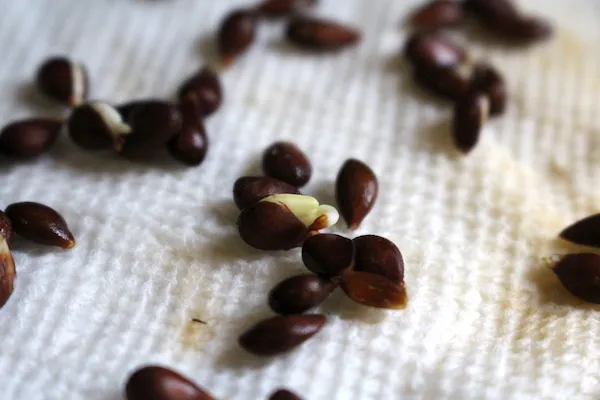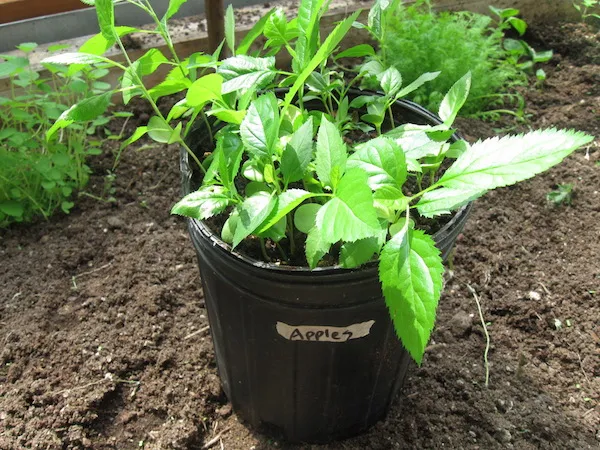Planting an apple seed may seem like a small act, but it holds the promise of a future filled with crisp, juicy apples, fragrant blossoms in spring, and the satisfaction of growing your own fruit from scratch. While many people enjoy apples from the supermarket, there’s something especially rewarding about starting your very own orchard — even if it’s just one tree to begin with.
In this detailed guide, we’ll walk you through everything you need to know about how to plant apple seeds, nurture them into strong saplings, and eventually grow thriving apple trees. Let’s turn those leftover apple seeds into something extraordinary!

Why Plant Apple Seeds?
Growing apples from seeds is a fun and educational project for home gardeners, families, or anyone who wants to connect with nature. While commercial orchards use grafted trees for consistency, planting apple seeds introduces an element of surprise — your tree might produce a completely unique, delicious variety you’d never find in stores.
Benefits of growing apple seeds:
- Cultivate rare or unique apple varieties.
- Create an orchard from scratch for personal use or as a legacy project.
- Enjoy beautiful flowering trees that support pollinators.
- Gain a deeper connection to nature and self-sufficiency.
Note: Apples grown from seed may take 6-10 years to bear fruit, and the fruit’s quality can vary. But the journey is incredibly rewarding.
Understanding Apple Seed Germination
Unlike many plants, apple seeds require a process called cold stratification — simulating winter conditions — to break dormancy and encourage germination.
Why is stratification needed?
In nature, apples drop in autumn and their seeds spend the winter in cold soil before sprouting in spring. Without this cold period, apple seeds remain dormant.
How to Prepare Apple Seeds for Planting
Step 1: Collect Healthy Seeds
- Cut open your favorite apples and remove the seeds.
- Rinse them in water to remove any fruit residue.
- Choose plump, brown, and glossy seeds — discard any shriveled or pale ones.
Step 2: Stratify the Seeds
You can simulate winter using your refrigerator.
Materials needed:
- Paper towels
- Ziplock bag or airtight container
- Water
How to stratify:
- Moisten a paper towel (not dripping wet).
- Wrap the apple seeds inside.
- Place the towel in a ziplock bag or container.
- Label it with the date.
- Refrigerate for 6–8 weeks at about 35°F–40°F (1.5°C–4.5°C).
Check the seeds occasionally. Once you see small roots emerging, they’re ready for planting.

Planting Apple Seeds Indoors
Once seeds have sprouted, it’s time to plant them in pots before eventually transplanting them outdoors.
What You’ll Need:
- Small pots (3-4 inches deep)
- Well-draining potting soil (a mix of compost and sand works well)
- Spray bottle for watering
Planting steps:
- Fill pots with moistened soil.
- Plant one seed per pot, about ½ inch deep.
- Gently cover with soil.
- Place in a bright, warm area — a sunny windowsill is perfect.
- Keep the soil moist but not waterlogged using a spray bottle.
Tip: Turn the pots regularly so seedlings grow straight towards the light.
Caring for Young Apple Seedlings
- Light: Apple seedlings need 12–16 hours of light daily. Supplement with grow lights if necessary.
- Water: Keep soil evenly moist, but avoid soggy conditions.
- Temperature: Maintain indoor temperatures between 65°F–75°F (18°C–24°C).
- Fertilizer: Apply a diluted, balanced liquid fertilizer once seedlings are 4–6 inches tall.
Transplanting Seedlings Outdoors
Once your seedlings reach 6–12 inches tall and the risk of frost has passed, you can move them outside.
How to harden off seedlings:
Gradually acclimate them to outdoor conditions:
- Set the pots outside in a sheltered, partially shaded spot for 2 hours.
- Increase outdoor exposure by 2 hours daily.
- After 7–10 days, they should be ready for full days outdoors.

Choosing the Right Planting Site
Apple trees thrive in:
- Full sun — at least 6–8 hours daily
- Well-draining, slightly acidic to neutral soil (pH 6.0–7.0)
- Areas with good air circulation, away from frost pockets
Tip: Avoid planting too close to buildings or large trees that may shade or compete with your apple trees.
How Far Apart to Plant Apple Trees
If you plan to plant multiple apple trees, spacing is key to healthy growth and good air circulation.
- Standard apple trees: 25–30 feet apart
- Dwarf varieties: 10–15 feet apart
- Semi-dwarf: 15–20 feet apart
Why spacing matters: Proper spacing prevents diseases, allows room for branches, and ensures trees aren’t competing for nutrients and water.
Caring for Young Apple Trees
Watering:
- Water deeply once a week during the first growing season.
- Adjust frequency during droughts or heavy rain.
Mulching:
- Apply a 2–3 inch layer of organic mulch around the base to retain moisture and suppress weeds.
- Keep mulch a few inches away from the trunk to prevent rot.
Fertilizing:
- Avoid fertilizing in the first year to focus on root development.
- From the second year onward, use a balanced fertilizer in early spring.

Pruning Apple Trees
Pruning shapes your tree, encourages fruit production, and prevents disease.
When to prune:
Late winter or early spring while the tree is dormant.
Basic pruning tips:
- Remove dead, damaged, or crossing branches.
- Thin out crowded areas to improve air flow.
- Keep the central leader (main trunk) dominant.
Pollination and Fruit Production
Apple trees are typically not self-pollinating. To get fruit, you’ll need two compatible apple trees that bloom at the same time for cross-pollination.
Options:
- Plant a second seed-grown apple tree.
- Graft a known variety onto your seedling.
- Ensure nearby neighbors have apple trees for pollination.
Pollinators: Bees, butterflies, and other insects are essential for fruit set.
When Will Your Apple Tree Bear Fruit?
Patience is key with apple trees grown from seed. They typically take 6–10 years to produce their first apples.
Factors that influence fruiting:
- Growing conditions
- Pollination
- Tree health and pruning practices
Fun Fact: Apples from seed-grown trees may not taste like the parent apple — they might be even better!
Common Apple Tree Pests and Problems
| Problem | Cause | Solution |
|---|---|---|
| Aphids | Small insects sucking sap | Spray with neem oil or insecticidal soap |
| Apple scab | Fungal disease | Plant disease-resistant varieties, remove infected leaves |
| Powdery mildew | Fungal spores | Prune affected areas, improve air flow |
| Codling moth | Caterpillars inside fruit | Use pheromone traps, remove affected fruit |
Final Thoughts
Starting apple trees from seed is a rewarding, long-term gardening adventure. While it takes patience, the beauty of blooming apple blossoms, the shade of leafy branches, and the satisfaction of nurturing a tree from seed to harvest make the effort worthwhile.
With proper care, your apple seedling could one day grow into a majestic tree that not only bears fruit but also stands as a symbol of your commitment to nature, sustainability, and the simple joys of homegrown goodness.





Leave A Comment